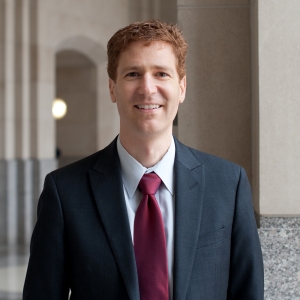 Do female professors differ from male professors in how they assign their coursework?
Do female professors differ from male professors in how they assign their coursework?
Jeff Colgan, assistant professor of political science and international studies at Brown University, examines if female professors assign more work from female scholars.
Jeff Colgan is Richard Holbrooke Assistant Professor of Political Science and International Studies at the Watson Institute of International Studies of Brown University. Previously he was on faculty at American University in Washington DC, and was a Residential Fellow at the Woodrow Wilson International Center for Scholars. He completed his PhD in politics and public policy at Princeton University, a Master’s at the University of California-Berkeley, and a Bachelor’s in nuclear engineering at McMaster University. He previously worked at McKinsey and Company, the Brattle Group, and the World Bank. His academic work is published journals such as International Organization, World Politics, International Security, and Foreign Policy.
Dr. Colgan’s research specializes on oil and international politics. He is author of two books and a dozen articles, including Petro-Aggression: When Oil Causes War (Cambridge University Press, 2013). His article on global oil politics in International Organization won the 2010 Robert O. Keohane award for the best article published by an untenured scholar. His 2014 article in the same journal argues that OPEC is not a functioning cartel, but rather a strictly political club.
Female Professors

Do female instructors design their courses differently than male instructors? Recently I studied 78 syllabi from International Relations courses around the country, all designed for PhD students. Overall, 75 to 80 percent of assigned readings were written by men, either individually or in teams. That’s high, but it is also roughly consistent with the demographics of the professors in the field, which is about 75 percent men.
What is more striking is that female instructors assign different types of readings than male instructors, in two ways. First, women assign more work written by female researchers than male instructors do, on average about 5 more articles or books per course than men. Second, female instructors are much more reluctant to assign research that they themselves have written, as compared to male instructors. On average, men assign a little over three readings per course that they wrote, about twice as much as female instructors.
These two findings are just correlation, not causation, but they are hard to ignore. Since publishing this finding, many instructors have told me that thinking about putting more women on their syllabus made their course better overall, in part because it forced them to think harder about what they really wanted to teach. Of course, instructors should try to put the best research available on their syllabus, regardless of who wrote it – but it is worth remembering that judgments about the “best research” are affected by gender.
We know from the statistics that many female graduate students ultimately leave academia and never become professors, especially in the field of international relations. One easy way to encourage women to stay in academia is to show great research by female scholars, early and often, to male and female students.
Read More:
